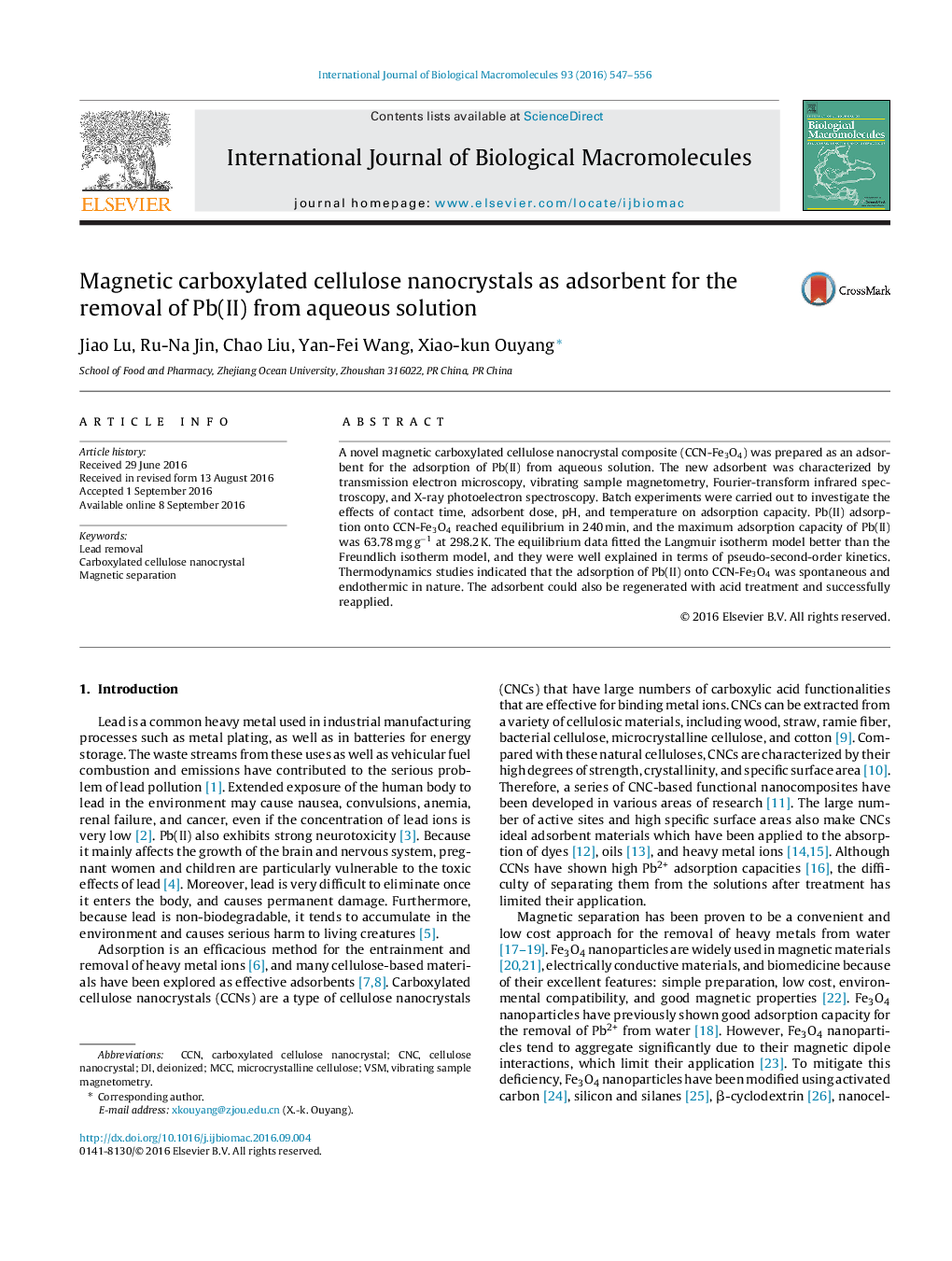| Article ID | Journal | Published Year | Pages | File Type |
|---|---|---|---|---|
| 6481675 | International Journal of Biological Macromolecules | 2016 | 10 Pages |
â¢A magnetic carboxylated cellulose nanocrystal composite (CCN-Fe3O4) was prepared.â¢The reusable CCN-Fe3O4 was characterized by TEM, VSM, FT-IR, and XPS.â¢The CCN-Fe3O4 was applied the adsorption of Pb(II) from aqueous solution.â¢The thermodynamics and kinetics of the adsorption process were evaluated.â¢The adsorption mechanism was considered by adsorption isotherm studies.
A novel magnetic carboxylated cellulose nanocrystal composite (CCN-Fe3O4) was prepared as an adsorbent for the adsorption of Pb(II) from aqueous solution. The new adsorbent was characterized by transmission electron microscopy, vibrating sample magnetometry, Fourier-transform infrared spectroscopy, and X-ray photoelectron spectroscopy. Batch experiments were carried out to investigate the effects of contact time, adsorbent dose, pH, and temperature on adsorption capacity. Pb(II) adsorption onto CCN-Fe3O4 reached equilibrium in 240 min, and the maximum adsorption capacity of Pb(II) was 63.78 mg gâ1 at 298.2 K. The equilibrium data fitted the Langmuir isotherm model better than the Freundlich isotherm model, and they were well explained in terms of pseudo-second-order kinetics. Thermodynamics studies indicated that the adsorption of Pb(II) onto CCN-Fe3O4 was spontaneous and endothermic in nature. The adsorbent could also be regenerated with acid treatment and successfully reapplied.
